Top 10 Most Beautiful Historical Sites in Egypt
Egypt, the ancient Pharaohs' home, is a location full of beautiful structures and tombs that awe visitors. But it's not just historic sites and tourist ... read more...attractions. There are enormous areas of the desert for 4WD excursions, the Red Sea's world-class coral reefs and wrecks for divers, and sailing on the legendary Nile River for all sorts of tourists. For decades, tourists from all over the world have been captivated by Ancient Egypt. The promise of well-preserved ruins, myths and legends of an ancient culture, and a bit of mystery are enticing to many. Especially because the majority of us grew up studying this old civilization in school, watching it on television or in movies, and reading about it in books. While prominent sites like the Great Pyramids, Abu Simbel, and the Valley of the Kings are nearly household names when it comes to Egypt, they aren't the only treasures to explore on your Egypt excursions. So, whether you've already seen Egypt's most popular sites, or if you're an adventurous traveler wishing to stray off the beaten path and experience something unique on a private Egypt trip, this post is for you: here are 10 most beautiful historical locations in Egypt that you've probably never heard of.
-
Abu Simbel, location of two temples erected by Egyptian king Ramses II (reigned 1279–13 BCE), currently in Aswn mufaah (governorate), southern Egypt. Historically, the region was on Pharaonic Egypt's southern border, facing Nubia. The four huge sculptures of Ramses in front of the main temple are magnificent specimens of ancient Egyptian art. The temples were saved from the rising waters of the Nile River caused by the construction of the Aswan High Dam in the 1960s by a sophisticated technical accomplishment.
The temples were discovered in 1813 by the Swiss scholar Johann Ludwig Burckhardt, who carved them out of a sandstone cliff on the west bank of the Nile, south of Korosko (today Kurusk). Giovanni Battista Belzoni, an early Egyptologist, was the first to investigate them in 1817.
The ancient site of Abu Simbel, which has two temples erected by Egyptian King Ramses II (reigned 1279–13 BCE), is presently located in Aswn mufaah (governorate), southern Egypt. The great temple is devoted to the sun gods Amon-Re and Re-Horakhte, and the smaller temple is dedicated to Nefertari for the worship of the goddess Hathor.
When the reservoir generated by the neighboring Aswan High Dam threatened to flood Abu Simbel in the mid-20th century, UNESCO and the Egyptian government funded an effort to conserve the monument. UNESCO launched an information and fundraising drive in 1959. Between 1963 and 1968, a crew and an international team of engineers and scientists took away the top of the cliff and entirely demolished both temples, rebuilding them on high land more than 200 feet (60 metres) above their old location, using donations from more than 50 countries. In all, 16,000 blocks were shifted. Abu Simbel, Philae, and other adjacent ruins were listed as a UNESCO World Heritage site in 1979.
Location: Nubia
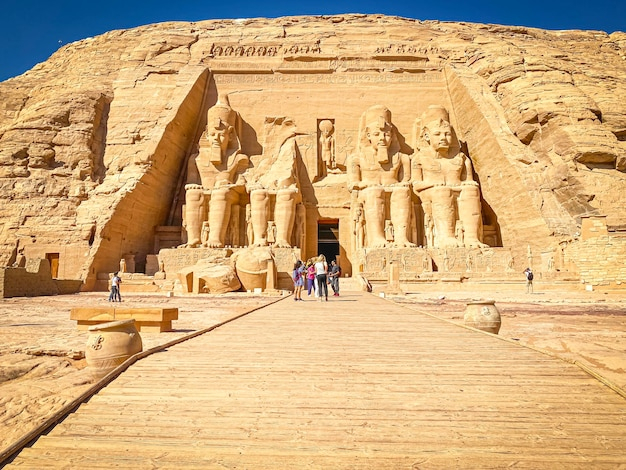
Photo: freepik.com 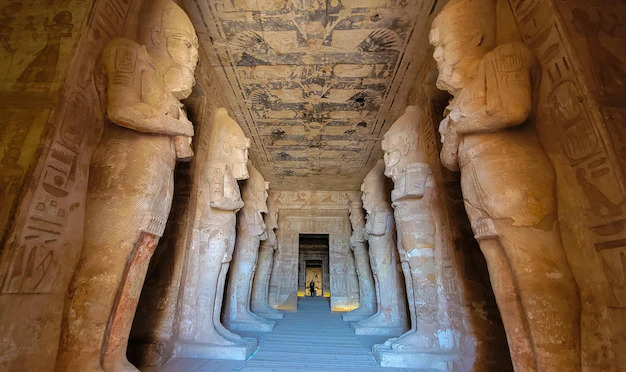
Photo: freepik.com -
For almost 4000 years, the remarkable design, precise geometry, and sheer size of the Giza Pyramids have prompted the obvious questions: 'How were we made, and why?' Centuries of investigation have provided us with some of the answers. They were built as gigantic tombs on the commands of the pharaohs by teams of tens of thousands of laborers. They now stand as an awe-inspiring testament to ancient Egypt's power, organization, and achievements.
Excavations on the Giza Plateau and the discovery of a pyramid builders settlement, complete with areas for large-scale food production and medical facilities, have provided additional evidence that the workers were not the slaves of Hollywood legend, but an organized workforce of Egyptian farmers. During the flood season, when the Nile inundated their fields, the highly structured bureaucracy may have redeployed the same farmers to work on the pharaoh's tomb. In this sense, the Pyramids might be viewed as an ancient job-creation program. Furthermore, the flood waters made it simpler to move building stones to the construction site.
Despite the facts, some people refuse to believe the ancient Egyptians were capable of such feats. Pyramidologists say that the perfect cutting and arrangement of the stones, as well as the numerological significance of the monuments' size, prove that angels or aliens built the Pyramids. It's easy to laugh at these outlandish theories. Still, when you view the monuments up close, especially inside, you'll understand why so many people believe such magnificent creations must have supernatural origins.
Location: Giza
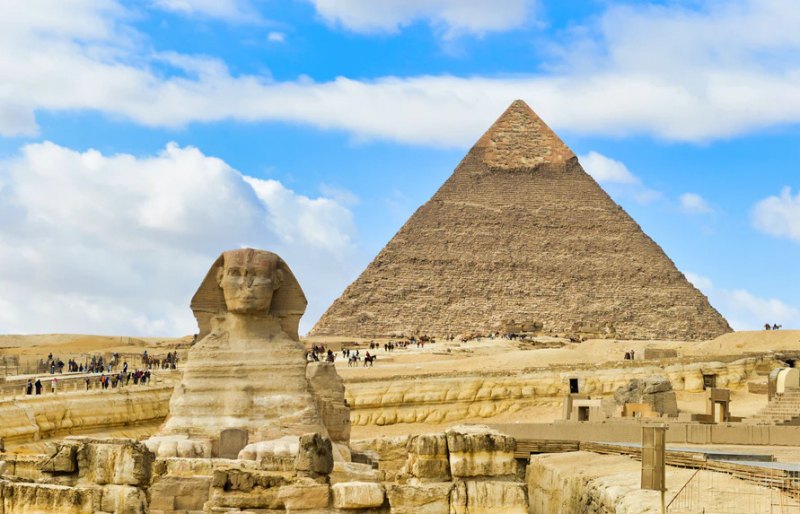
Photo: architecturaldigest.com 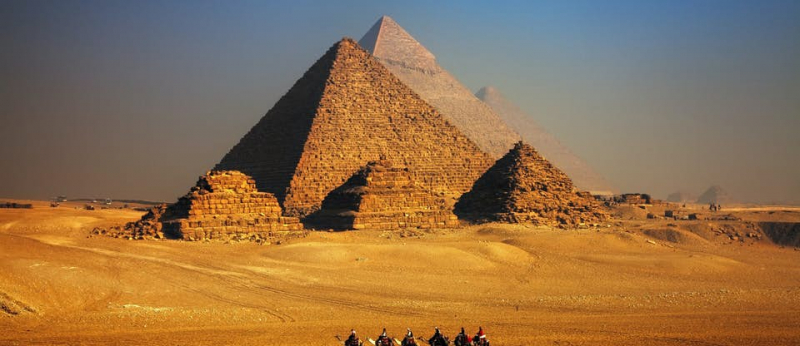
Photo: lonelyplanet.com -
The Egyptian Museum is the Middle East's oldest archaeological museum and one of the most beautiful historical sites in Egypt, and it includes the world's greatest collection of Pharaonic artifacts. The museum houses an enormous collection covering the Predynastic Period to the Greco-Roman Era.
The building's architect was chosen in an international competition in 1895, the first of its type, and was won by the French architect, Marcel Dourgnon. Khedive Abbas Helmy II dedicated the museum in 1902, and it has since become a historic landmark in downtown Cairo, housing some of the world's most exquisite ancient treasures.
The museum is unique in its display of Egyptian civilization's whole history, particularly artefacts from the Pharaonic and Greco-Roman periods. A variety of enormous and heavy items, including giant statues located inside the main atrium, may be found on the ground floor. The museum had over 100,000 objects in its collection at one point. However, due to the museum's busy and inadequate area, the majority of the relics were never shown.
The entire tombs of Yuya and Thuya, Psusennes I and the riches of Tanis, and the Narmer Palette marking the unification of Upper and Lower Egypt under one ruler, are among the museum's important objects. The museum also exhibits magnificent statues of the ancient monarchs Khufu, Khafre, and Menkaure, who built the Giza plateau's pyramids. This very large museum is completed with an enormous collection of papyri, sarcophagi, and jewelry, among other things.
Location: Cairo
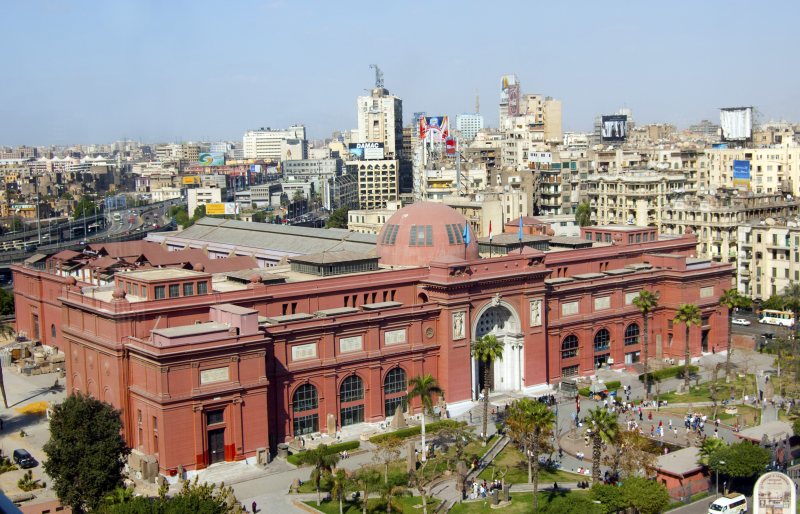
Photo:wikipedia.org 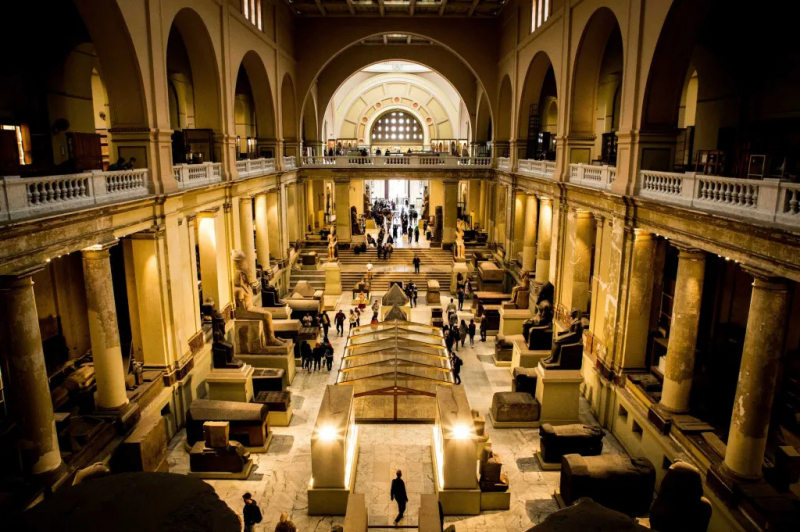
Photo: fieldwork.tv -
Abydos is one of ancient Egypt's oldest and most important historical sites, dating back to 3300 BCE. The sacred city, located on the west bank of the Nile in Upper Egypt, overlooks a desert valley that was previously supposed to provide access to the world of the dead. It served as the royal burial site for Egypt's early pharaohs and subsequently as a focus of worship for the religion of Osiris, the god of the underworld. Excavations in Abydos have added to our understanding of Egypt's ancient history in current times.
The western desert embayment of Abydos, Umm al-Qab, has long been regarded as the 1st and 2nd dynasties' royal burial. Excavations that have been ongoing since the late 1970s, however, have unearthed a collection of ancient tombs belonging to a sequence of monarchs who precede the 1st dynasty and Egypt's formal unity.
These tombs have provided a bountiful crop of complete ceramics, royal symbols, ivory labels, and the names of various predynastic monarchs. The inscribed labels also show that Egyptian writing advanced earlier than previously thought. Furthermore, three large-scale mud-brick enclosures at the desert's border were identified as funeral sites for the kings of the 1st (c. 2925–c. 2775 BCE) and 2nd (c. 2775–c. 2650 BCE) dynasties. A number of wooden boats covered with whitewashed mud-brick casings were discovered near one of the enclosures, and were most likely prototypes for the boats buried in trenches close to the pyramids of the Old Kingdom (c. 2575–c. 2130 BCE).
Location: Abydos, 500 kilometres from Cairo.
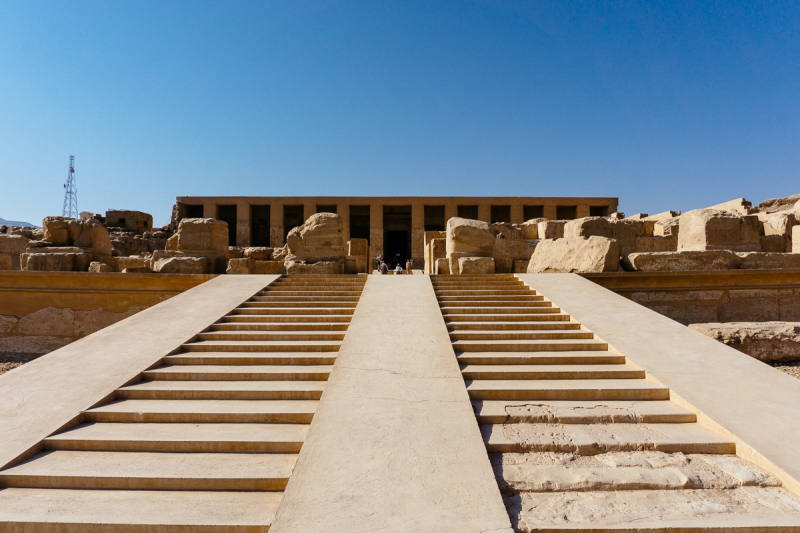
Photo: wediscoveredthis.com 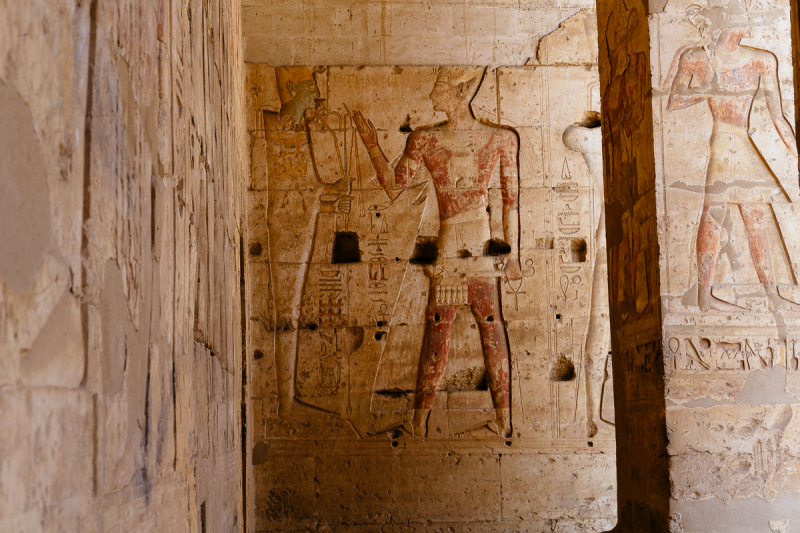
Photo: wediscoveredthis.com -
Saqqara, located south of Cairo, was the massive necropolis of Memphis, the Ancient Egyptian capital, and is home to the nation's oldest pyramid, the Step Pyramid of Djoser. This is a beautiful historical place in Egypt.
Aside from housing Egypt's oldest pyramid, Saqqara is the country's greatest archaeological site. Nobles were buried here for roughly 3500 years, notably while neighboring Memphis was the capital city, and the vast ancient burial site is filled with additional smaller pyramids, tombs, and funerary complexes.
The Step Pyramid, built by Imhotep - one of history's earliest recognized architects - during the reign of Pharaoh Djoser approximately 2630 BCE, was the focal point of the Third Dynasty ruler's burial complex, which also included an amazing hypostyle entry hall.
The step pyramid, which stands over 200 feet (60 meters) tall and has a base of 358 feet by 397 feet (109 m by 121 meters), was the Egyptians' first successful effort to create a pyramid and is one of the world's earliest monumental cut stone buildings. Djoser's Pyramid is important as an engineering marvel in and of itself, as well as for clearing the way for the construction of the "real pyramids" of Giza and the rest of Egypt.
Fans of Egyptian history and architecture should also pay a visit to the Imhotep Museum, which has a modest but noteworthy collection of exquisite antique artefacts discovered in and near Saqqara.
Location: Cairo.
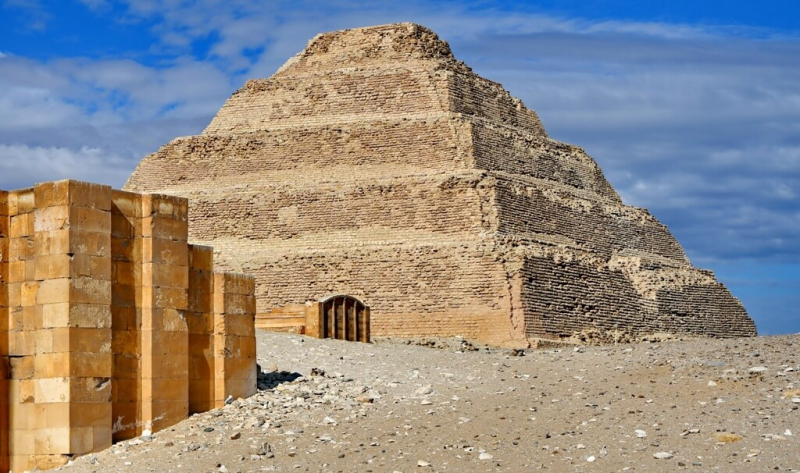
Photo: egyptfuntours.com 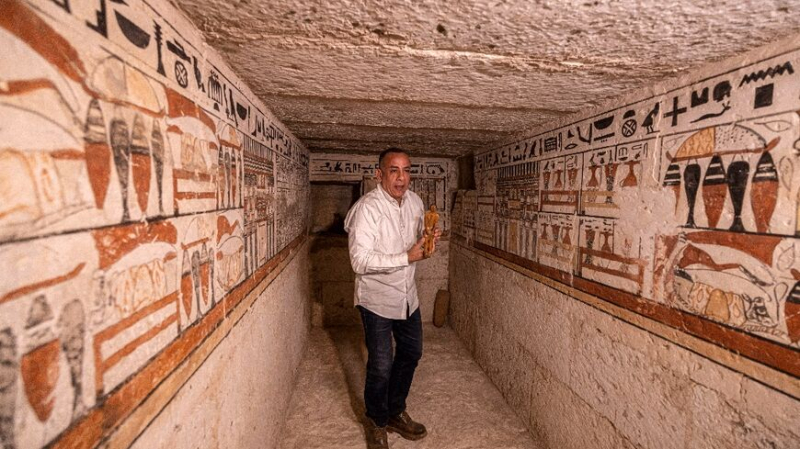
Photo: al-monitor -
The Villa of the Birds is one of three beautiful historical villas in Alexandria's Kom al-Dikka archaeological park, which covers over 40,000 square meters and slopes considerably below present-day street level. The park's residential section along the eastern elevation dates from the first to third century AD. Over the ages, the villa's mosaic flooring and original floorplans have been preserved.
The American Research Center in Egypt began efforts to protect the mosaics in the Villa of the Birds in 1998, in conjunction with the US Agency for International Development, the Polish-Egyptian Preservation Mission, the Polish Center of Archaeology, and Egypt's Supreme Council of Antiquities. The mosaic's creative representation of birds is a one-of-a-kind characteristic, and it is one of the few figural mosaics from Alexandria's Roman period that have survived to the current day.
The Birds' Villa Alexandria features magnificent birds depicted in tiny detailed mosaic tiles. Furthermore, there are the remnants of a great villa that existed here during Hadrian's rule. The main area had a magnificent mosaic floor displaying numerous bird species. Villa of the Birds is one of Egypt's best surviving examples of a big Roman mansion. In actuality, the villa was burned down. Large areas of the mosaic tile floor have also been repaired and restored.
Location: Alexandria
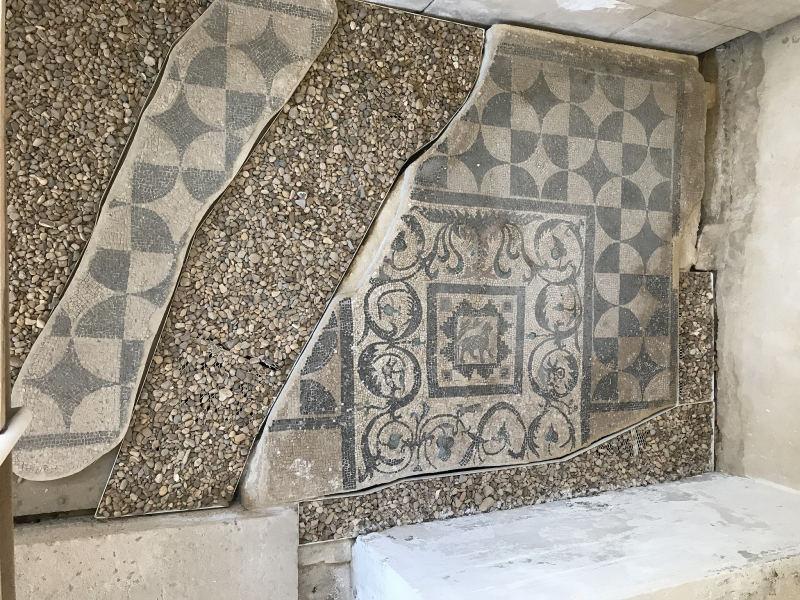
Photo: flickr.com 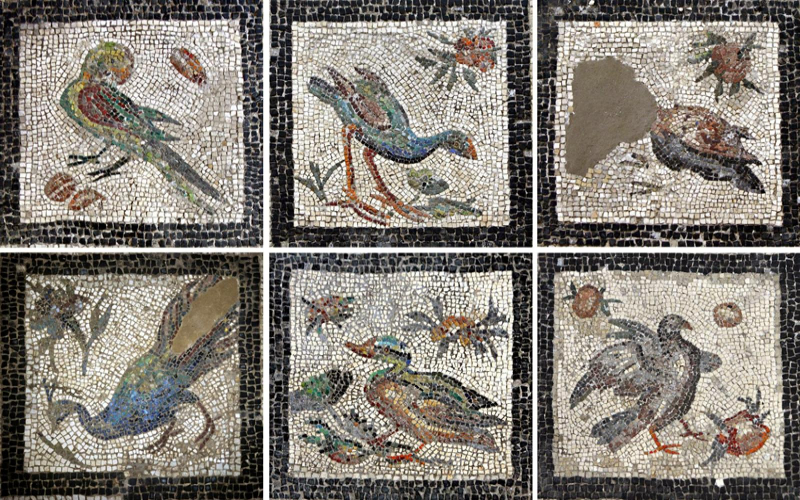
Photo: egyptianstreets.com -
Dendera's temple complex is fairly big, with a basilica, two birth homes, a sacred lake, and several smaller temples and shrines. The structures at the site date from many ancient Egyptian eras, including the Middle Kingdom, the Ptolemaic Era, and the time of Roman provincial authority.
The first building on the site was constructed approximately 2250 BCE, although the remaining constructions date largely from the Ptolemaic era forward. Construction of the Mentuhotep II monument, the oldest surviving building when the site was uncovered, most likely began about 1995 BCE. The Mentuhotep statue was later relocated to Cairo. The earliest building still standing was erected around 345 BCE by Nectanebo II. All of this is to imply that the building as we know it began around 54 BCE, when construction on the Temple of Hathor, the most prominent edifice at the Dendera complex, began. The Temple of Hathor is one of Egypt's best-preserved ancient monuments, and it's a great example of classic Pharaonic architecture. The Temple of Hathor was mostly constructed during the Ptolemaic Dynasty, a time of Greek control in Egypt. The temple, however, was finished under the Roman emperor Trajan, who is pictured on the complex's walls giving sacrifices to Hathor. The temple complex also features a massive doorway built by Trajan and Domitian, another Roman emperor.
This location was a hub for the Hathor cult. During a period known as the Happy Reunion, Hathor was said to go from her temple in Dendera to spend time with her husband, Horus, at his temple in Edfu. This "reunion" took place once a year, and the return of Hathor to Dendera was supposed to mark the formal start of the Nile's flood season.
Location: Dendera
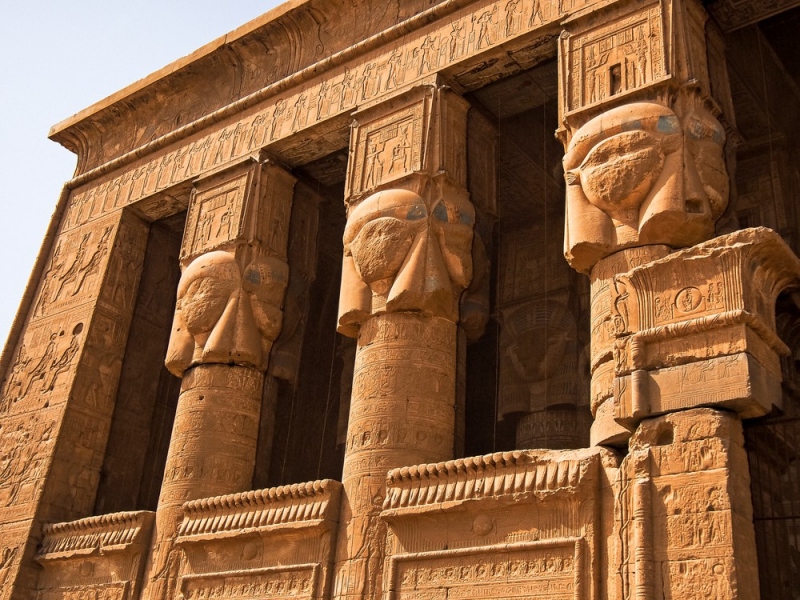
Photo: egypttoursportal.com 
Photo: worldhistory.org -
The Underground Library of Alexandria, located beneath the Serapeum ruins, is made up of a labyrinth of subterranean tunnels and storerooms where it is thought a portion of the Great Library of Alexandria's collection was held and this is one of the most beautiful history in Egypt..
The names of Demetrius of Phaleron, a member of the Peripatetic school and a former Athenian statesman, are inextricably linked with the establishment of the Great Library and the Mouseion. Ptolemy, the King's counselor, quickly took advantage of Demetrius' broad and flexible knowledge and tasked him with constructing the library and the Mouseion around 295 BC.
Many ancient civilizations in Egypt, Mesopotamia, Syria, Asia Minor, and Greece had libraries and archives, but the earliest such institutions were of a local and regional type, primarily concerned with the preservation of their own distinctive traditions and history. The concept of a universal library, such as that of Alexandria, emerged only when the Greek intellect began to envision and incorporate a broader worldview. The successes of their neighbors captivated the Greeks, and many Greek philosophers wanted to explore the riches of their knowledge. There is written evidence of Greeks visiting Egypt specifically to gain knowledge, such as Herodotus, Plato (notably in Phaedrus and Timaeus), Theophrastus, and Eudoxus of Cnidus (as recorded by Diogenes Lartius in the third century CE).
However, the Alexandria underground library – or at least the structure – continued in use until the Serapeum was destroyed in 391AD and may have been utilized for religious reasons by Serapis believers.
Visitors may now tour the underground rooms and observe the niches in the walls where the manuscripts were kept. This location is also one of ten famous tourist destinations in Egypt.
Location: Alexandria.
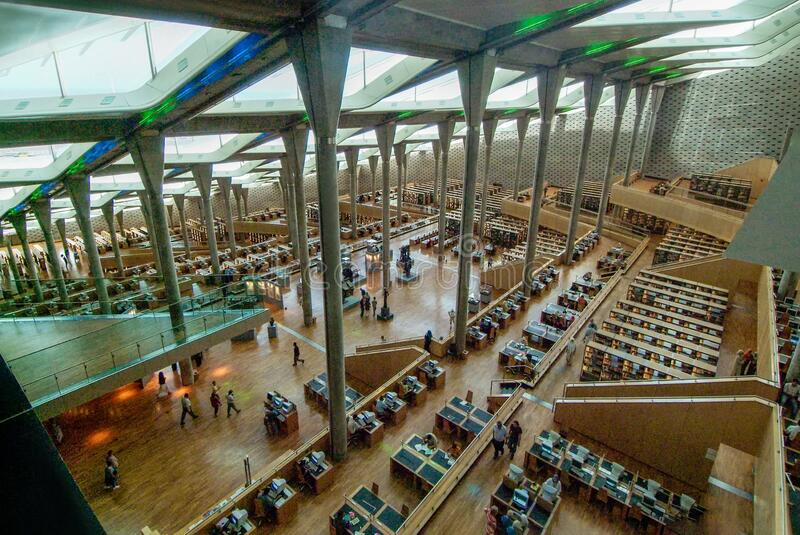
Photo: dreamtimes.com 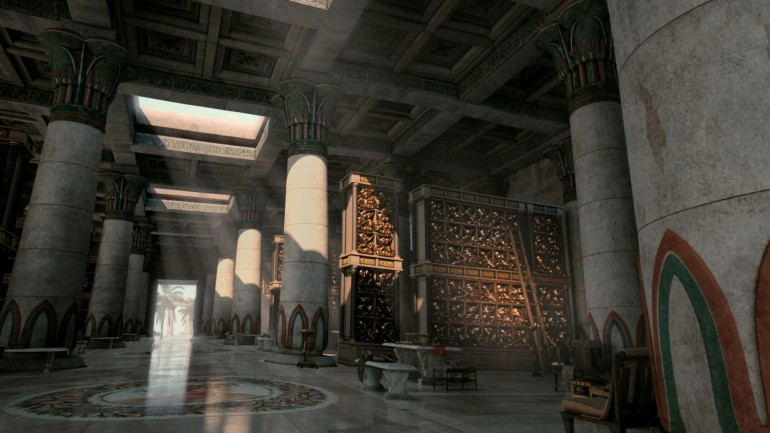
Photo: dreamtimes.com -
Luxor Temple was the largest and most important religious historical institution in ancient Egypt, built over hundreds of years by Amenhotep III, Ramses II, Tutankhamun, and other pharaohs.
Luxor Temple was "the site of the First Occasion" in what was once Thebes, where the deity Amon experienced a rebirth during the pharaoh's yearly reenacted coronation rite. Today, the massive Great Colonnade Hall, over 61 meters long, with 28 twenty-one-foot-high columns, is the only remnant of this immense structure, its decorating was primarily accomplished by Tutankhamun around 1330 B.C. Many of the temple's sides were demolished following the pharaohs' reigns and repurposed for construction materials.
Prior to the 1960s excavation, the temple's sandstone fragments were in close contact with salt-laden groundwater, which leached into the stone. Exposure to fluctuations in humidity after excavation mobilized these salts and hastened degradation. The World Monuments Fund dedicated funding from the Robert W. Wilson Challenge to Conserve Our Heritage to the conservation of Luxor Temple between 2001 and 2007. Over 1,000 crumbling blocks and inscribed wall fragments were treated and consolidated, halting disintegration and allowing for early phases of rebuilding.
To mix in with the ancient stone of the temple, an outside piece of the eastern wall of the Colonnade Hall was reinforced with a brick buttress disguised by sandstone slabs. Another main set of 48 shards was put into the foot of that buttress where it joins the wall, completing the image of the holy barge and towboats of the hawk-headed moon-god Khonsu. A life-size statue of Ramesses II's principal wife, Queen Nefertari, was found, cleaned, and preserved. Missing parts of her legs were discovered, painstakingly restored to the statue, and likewise safeguarded.
Thousands of sandstone fragments recovered near Luxor Temple contain carved and painted details of hieroglyphic texts and temple ritual scenes; once identified, documented, and consolidated, many have been joined and reassembled into entire wall scenes as part of the Wilson Challenge Ancient Thebes Initiative. This challenging project also paid for Thutmosis III's portico addition to the Karnak Temple in 1400 B.C. and Amenhotep III's Mortuary Temple in the Theban Necropolis.
Location: Luxor.
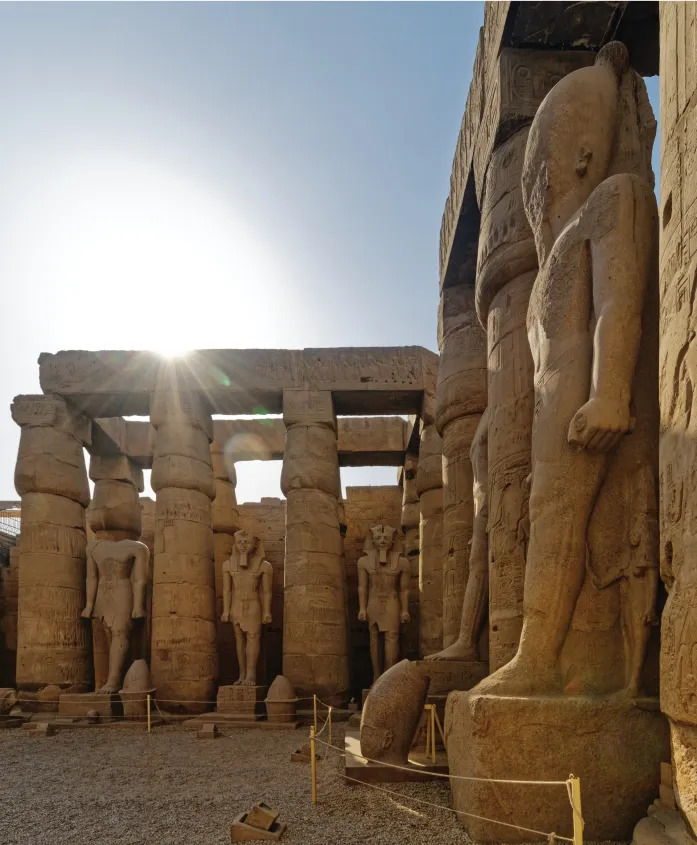
Photo: the-past.com 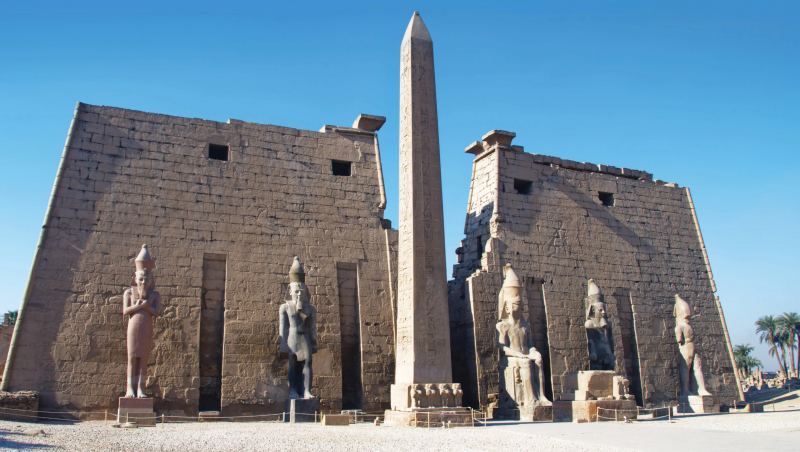
Photo: the-past.com -
Valley of the Kings is located near Luxor on the west bank of the Nile River. It is the most well-known historical location for its unique tomb collections and stunning ancient ruins. Because of its position, it is one of the most popular places to learn about ancient Egyptian history.
At first look, the Valley of the Kings, also known as the Valley of the Gates of the Kings, appears to be nothing more than a sun-blasted valley of basic red rock, yet beneath all of its dust lie the tombs of 63 of Ancient Egypt's most famous pharaohs. The Valley of the Kings served as a burial chamber for the Kings, their families, and their treasures for approximately 500 years, from the 16th to the 11th centuries BC. It and the remainder of the Theban Necropolis were designated World Heritage Sites in 1979.
The tomb of Pharaoh Tutankhamun and all of his valuables, discovered by Howards Carter during an excavation expedition in 1922, is one of the most notable tombs discovered in the Valley of the Kings. Since then, travelers from all over the globe have been drawn to the place as the riches uncovered have traversed the world on a tour to share the message that this incredibly important find for the history of our civilization was discovered in the Valley of the Kings.
Excavations continue in some portions of the Valley of the Kings to this day, and a rotation system is in place for people to view the tombs while restoration procedures are in place to recover the tombs that were discovered.
The Valley of the Kings was the main burial place for most of the royal pharaohs during the New Kingdom period of ancient Egypt (1539-1075 B.C.). Tutankhamun, Seti I, and Ramses II were among the most notable pharaohs buried there. There are also the royal tombs of most of the 18th, 19th, and 20th dynasties' queens, high priests, and other period elites. Remember that Tutankhamun was a minor king, made renowned by the fact that his tomb was the only one in the valley discovered with its contents intact, not by the magnificence of his tomb in comparison to the others. These items are presently on exhibit in Cairo's Egyptian Museum.
Location: Luxor.
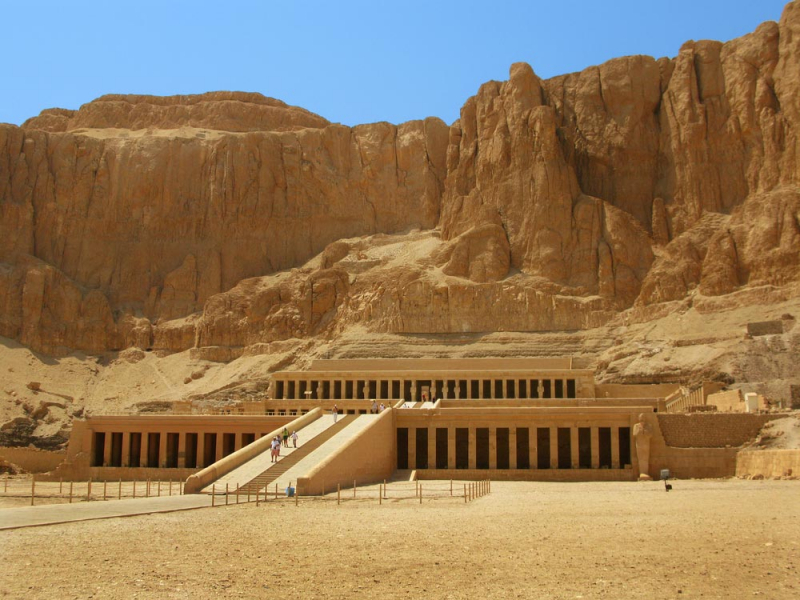
Photo: world map 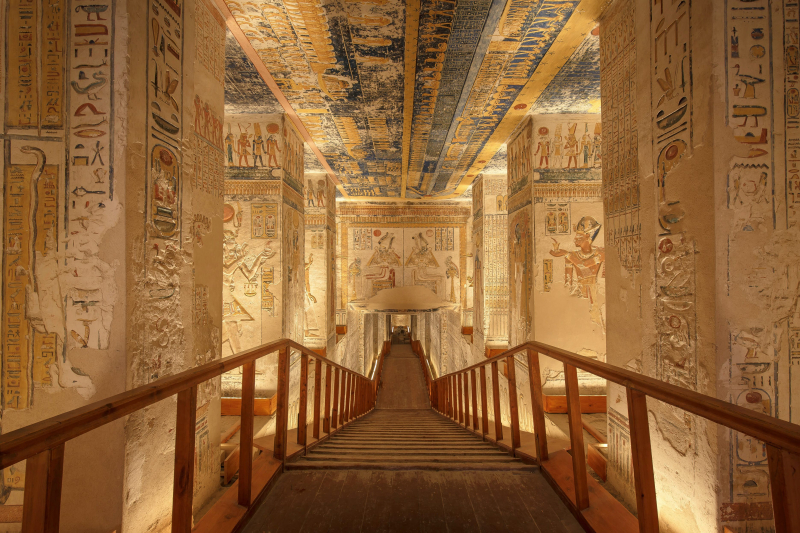
Photo: lonelyplanet































